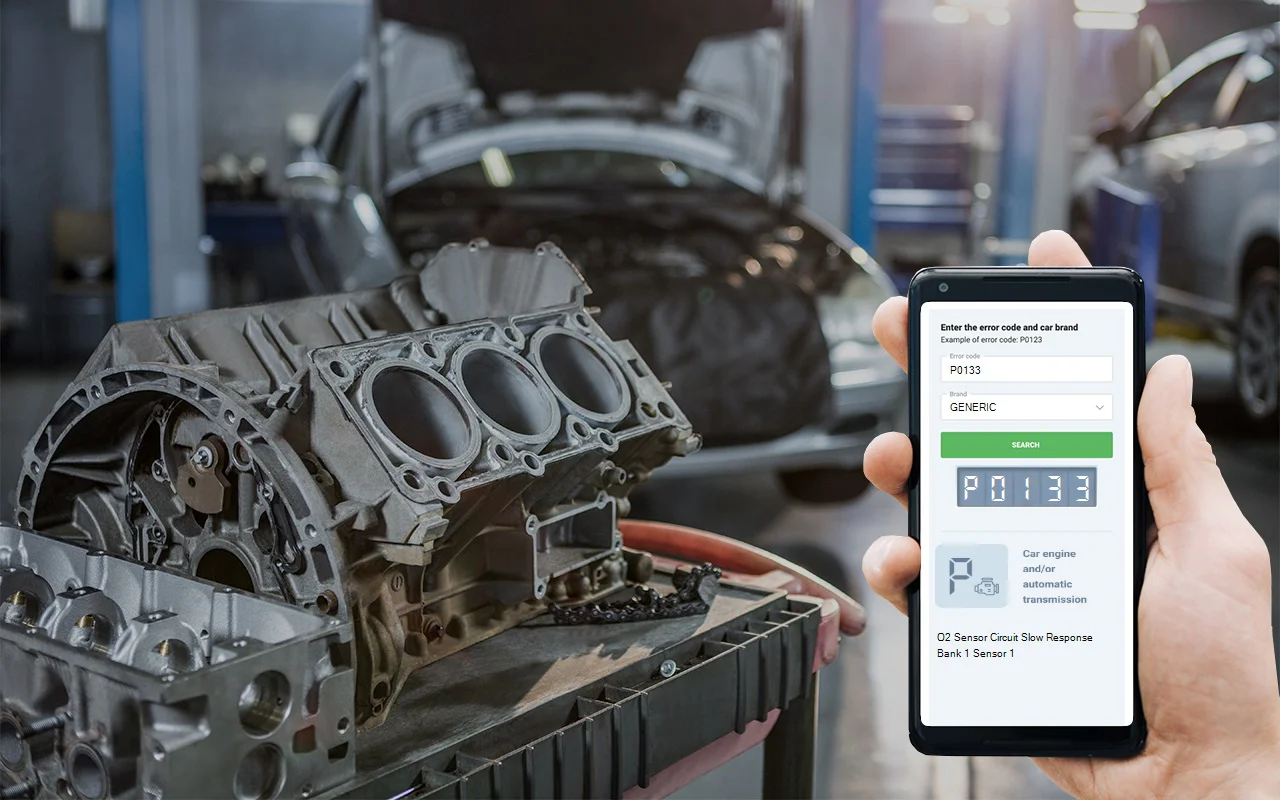P0133 is a code I’ve run into more times than I can count. What it’s telling you is that your vehicle’s computer has picked up on the downstream oxygen sensor-Bank 1, Sensor 2-not switching as quickly as it should. That sensor sits after the catalytic converter and plays a key role in monitoring oxygen levels in your exhaust. In my time under the hood, I’ve seen how that sensor feeds back info so the engine computer can fine-tune fuel delivery. If it starts lagging, your computer can’t make those quick, necessary adjustments, which throws off your engine’s efficiency. Some vehicles, especially when the upstream sensor isn’t pulling its weight, will lean even harder on this downstream sensor. Trust me, it’s one sensor you don’t want acting up.
DTC P0133
Causes of P0133
From what I see most often in the shop, P0133 usually comes down to a few main culprits. Here’s what I typically check first:
- A worn-out or contaminated oxygen sensor (especially if it’s been on the car for a while)
- Problems with the heater circuit inside the sensor-if it can’t warm up properly, it won’t work right
- Wiring issues, like frayed wires or loose connections in the sensor circuit
- Exhaust leaks near the sensor, which can throw off its readings
- Air leaks before the sensor (like a cracked intake hose)
- Less commonly, a problem with the engine computer itself, or sometimes a software update is needed
On certain models from Ford, Renault, or Toyota, I’ve also seen mass airflow sensor issues or improper fueling cause this code. But nine times out of ten, it’s the sensor or wiring.
Symptoms of P0133 code
Honestly, a lot of folks don’t notice much besides the check engine light popping on. Sometimes, you might feel a slight drop in fuel economy, or the engine might not run as smoothly as usual. But most of the time, the car drives pretty normally. Still, don’t let that fool you-just because you don’t feel it doesn’t mean it’s not causing trouble under the hood.

Diagnosis steps for dtc P0133
Here’s how I tackle a P0133 code, step by step:
- First, I always start by scanning the car with a proper OBD tool to confirm the code and check for any related codes. Sometimes, there’s more going on than just P0133.
- Next, I’ll do a visual inspection of the oxygen sensor and its wiring. Look for any obvious damage-cracked wires, loose connectors, or signs of corrosion. Don’t forget to check for exhaust leaks around the sensor. Sometimes you can hear a ticking sound or see black soot where a leak is.
- After that, I’ll use a scan tool to watch the sensor’s voltage readings while the engine is running. The downstream sensor should show some movement, but if it’s sluggish or barely changes, that’s a red flag.
- If the wiring and sensor look okay, I’ll check the heater circuit with a multimeter. A bad heater will keep the sensor from reaching the right temperature, making it slow to respond.
- On vehicles from Ford and similar brands, I also check for intake air leaks and make sure the mass airflow sensor is clean and working right.
- If everything else checks out, sometimes the PCM needs a software update, but that’s rare. I always rule out the basics first.
It’s best to have someone help you rev the engine while you watch the scan tool, so you can see how the sensor reacts in real time.

Common Mistakes when fixing obd2 code P0133
One thing I see a lot is folks replacing the oxygen sensor right away without checking the wiring or looking for exhaust leaks. That can be a waste of money if the real problem is a broken wire or a leak. Another common mistake is ignoring the heater circuit-if the heater’s bad, a new sensor won’t fix the issue. And don’t forget, sometimes a dirty mass airflow sensor or a vacuum leak can set this code, so it pays to be thorough.

Seriousness of obd code P0133
While P0133 might not leave you stranded, it’s not something to ignore. If you let it go, your engine could start running rich or lean, which can damage the catalytic converter over time-a repair that’s definitely not cheap. Plus, you’ll likely burn more fuel and possibly fail an emissions test. Things can go south quickly if you overlook it, especially if other codes start popping up. Don’t put this off for later; it’s best to get it checked out before it turns into a bigger headache.
Repair options for P0133 engine code
Here’s what usually fixes a P0133 code, based on what I see in the field:
- Replacing the downstream oxygen sensor with a quality, OEM-spec part
- Repairing or replacing damaged wiring or connectors in the sensor circuit
- Fixing any exhaust leaks near the sensor
- Cleaning or replacing the mass airflow sensor if it’s dirty or faulty (especially on Ford vehicles)
- Addressing any intake air leaks
- In rare cases, updating the PCM software or replacing the PCM if it’s truly faulty
I always recommend starting with a thorough inspection before spending money on parts. That way, you’re not just guessing.
Conclusion
To sum it up, P0133 means your downstream oxygen sensor is responding too slowly, which can mess with your engine’s efficiency and long-term health. While it might not feel urgent at first, it’s important to diagnose and fix it sooner rather than later to avoid bigger problems like a damaged catalytic converter. The most reliable way forward is to check the sensor, wiring, and for any leaks, then replace what’s needed. Don’t wait until you’re dealing with more expensive repairs-take care of it now and your car (and wallet) will thank you.




